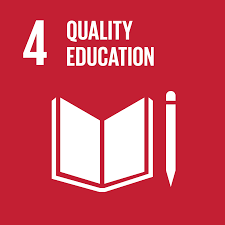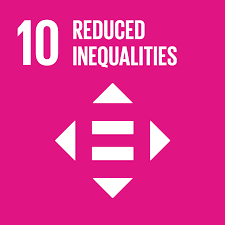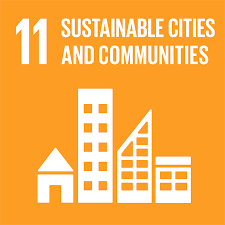Supporting People with Disabilities Can Make our World a Better Place
- Arushi

- Jul 28, 2020
- 5 min read
This article focuses on the following UN Sustainable Development Goals:
You, me and an additional 7.8 billion people on this planet should have the same rights, to the same extent; it doesn’t matter what our gender is, what our beliefs are or what abilities we were born with. Yet, why is it that 90% of children who have disabilities do not attend school? Why are 47% of the persons with disabilities poor? Why are people with disabilities 1.7 times more likely to become victims of violent crimes? (Gaille).

We are all apprised of major humanitarian issues such as racism, sexism and cultural discrimination. Although, an issue that we tend to often overlook is how society treats PWDs (Person with Disabilities). The lack of attention we give to this problem is caused by the fact that we do not comprehend the difficulties they face. We are unable to imagine ourselves without sight, the ability to hear, the ability to think clearly, the ability to walk, or thousands of other functions which we take for granted every single day. However, there are over 1 billion people in the world today (15% of the world’s population) who do understand and go through difficulties like these daily (“10 Facts on Disability”). If going through such problems isn’t enough, they are also treated differently from us. Whether it’s about education, healthcare or economic facilities, there exists a barrier. The barrier is discrimination.
And we, as a community, have a responsibility to break this barrier.
“Persons with disabilities are entitled to exercise their civil, political, social, economic and cultural rights on an equal basis with others under all the international treaties” (United Nations Voluntary Fund).
I am proposing the following solutions in order to ensure that PWDs are treated equitably:
Mainstreaming PWDs and using positive discrimination,
Making assistive technology and disability-friendly infrastructure mandatory,
Encouraging awareness and empathy towards PWDs, globally.
Firstly, in order to ensure that PWDs are treated fairly around the world, we need to mainstream them in all walks of life. Particularly, from schools to colleges to work, it is important that they are able to participate in the same institutions or sectors just the same as anyone else. This is where positive discrimination comes into play as well; PWDs should have specific rights to make sure that they get an opportunity to be as successful as anyone else. By setting regulations and laws, a certain percentage of places and seats should be reserved for PWDs in schools, colleges and workplaces. Examples for positive discrimination for PWDs are: 4% of all jobs in Austria, 5% of jobs in firms having 20 or more people in Germany, and 3% of all public and private sector jobs in India are to be filled by PWDs (Cuppage). Thus, there should be regulations as such when it comes to education or workplaces, globally, to ensure that no injustice takes place.
Secondly, knowing their disabilities and the difficulties they face, institutions should always possess assistive technology (such as wheelchairs, specific computer softwares and cognitive aids). This means that technology for mobility, access, reading, writing and talking should be available at all institutions (such as schools, colleges and workplaces) at all times, which will help PWDs be more efficient with their work and help them overcome the difficulties they may face due to their disabilities. Furthermore, this connects to making sure that all infrastructure is disability-friendly (for example: building ramps, including grab bars and ensuring wide doors for accessibility). Not only places of study or work should take this into consideration, but so should all public places; from public toilets to airports to public transportation, the infrastructure should be favorable to PWDs so that they can commute and perform normal tasks with as much ease as anybody else.
Lastly, a large part of this solution relates to changing the mindset of society. Awareness and empathy are two key values that we all should keep in mind. To clarify, instead of sympathizing with PWDs (and making them feel inferior to us, in the process), we should educate ourselves about what they experience and ensure that they are included in our society. From an early age, kids in school should be taught about what PWDs go through and how important it is to treat them fairly. The key is to know: they do not need our sympathy, they need our empathy.
In the UK, the COVID-19 mortality rate of persons with disabilities is two times the rate of persons without disabilities (Nafilyan).
These solutions will help us reach the following UN SDGs (United Nations’ Sustainable Development Goals): SDG 4 - Quality Education, SDG 10 Reduced Inequalities and SDG 11 - Sustainable Cities and Communities.
Mainstreaming PWDs and positive discrimination helps us achieve:
SDG 4: Quality Education, as it ensures that all children are provided with good quality educational opportunities.
SDG 10: Reduced Inequalities, as this ensures that everyone gets equal rights and opportunities.
Encompassing assistive technology and making infrastructure disability-friends helps:
SDG 4: Quality Education, as this lets all students with disabilities perform as efficiently as possible.
SDG 10: Reduced Inequalities, as this helps equalize the abilities of PWDs and others who do not have these difficulties.
SDG 11: Sustainable Cities and Communities, as this ensures that all public areas and work/study places are safe and inclusive for all people.
Changing the mindset of society helps reach:
SDG 4: Quality Education, because teaching students the importance of empathy towards PWDs helps create a positive educational environment, thereby enabling students to perform their best.
SDG 10: Reduced Inequalities and SDG 11: Sustainable Cities and Communities, as this new mindset helps treat PWDs equally and makes their communities more safe for them to be a part of.
Only 35% of people with at least one disability and are of working age actually have a job (Gaille).
All in all, although elaborate, the following solutions are key for our society to ensure equality among persons with and without disabilities: mainstreaming persons with disabilities, using positive discrimination to give them equal opportunities, introducing assistive technology to work/study places, making infrastructure disability-friendly, and changing our mindsets about this issue. Additionally, these solutions will help achieve the United Nations’ Sustainable Development Goals 4 (Quality Education), 10 (Reduced Inequalities) and 11(Sustainable Cities and Communities).
It is high time that our global society takes action to ensure that all persons are treated the same, no matter who they are. You, me and another 7.8 billion people have a lot of work to do but remember, change starts with you.
External Resources
Click here to view the United Nations’ Convention on the Rights of Persons with Disabilities (CRPD).
View these sites to educate yourselves and others about persons with disabilities:
Click on these links to find places to donate:
Didn’t find one that you like? Click here to choose one which satisfies your needs.
Bibliography
“10 Facts on Disability.” World Health Organization, World Health Organization, 29 Nov. 2017, www.who.int/features/factfiles/disability/en/. Accessed 26 July 2020.
Cuppage, Julian, and Julian Cuppage. IGlobal Law, 11 Dec. 2013, www.igloballaw.com/the-world-and-disability-quotas-or-no-quotas/. Accessed 26 July 2020.
Gaille, Brandon. “21 Amazing Disability Discrimination Statistics.” BrandonGaille.com, 24 May 2017, brandongaille.com/20-amazing-disability-discrimination-statistics/. Accessed 26 July 2020.
Nafilyan, Chris White and Vahe. “Coronavirus (COVID-19) Related Deaths by Disability Status, England and Wales: 2 March to 15 May 2020.” Office for National Statistics, Office for National Statistics, 18 June 2020, www.ons.gov.uk/peoplepopulationandcommunity/birthsdeathsandmarriages/deaths/articles/coronaviruscovid19relateddeathsbydisabilitystatusenglandandwales/2marchto15may2020. Accessed 26 July 2020.
“United Nations Voluntary Fund on Disability – Activities Supported Enable.” United Nations, United Nations, www.un.org/development/desa/disabilities/news/news/unvfd.html. Accessed 26 July 2020.







Comments